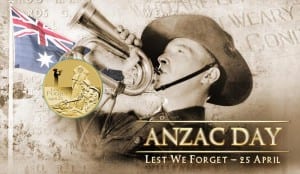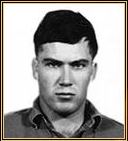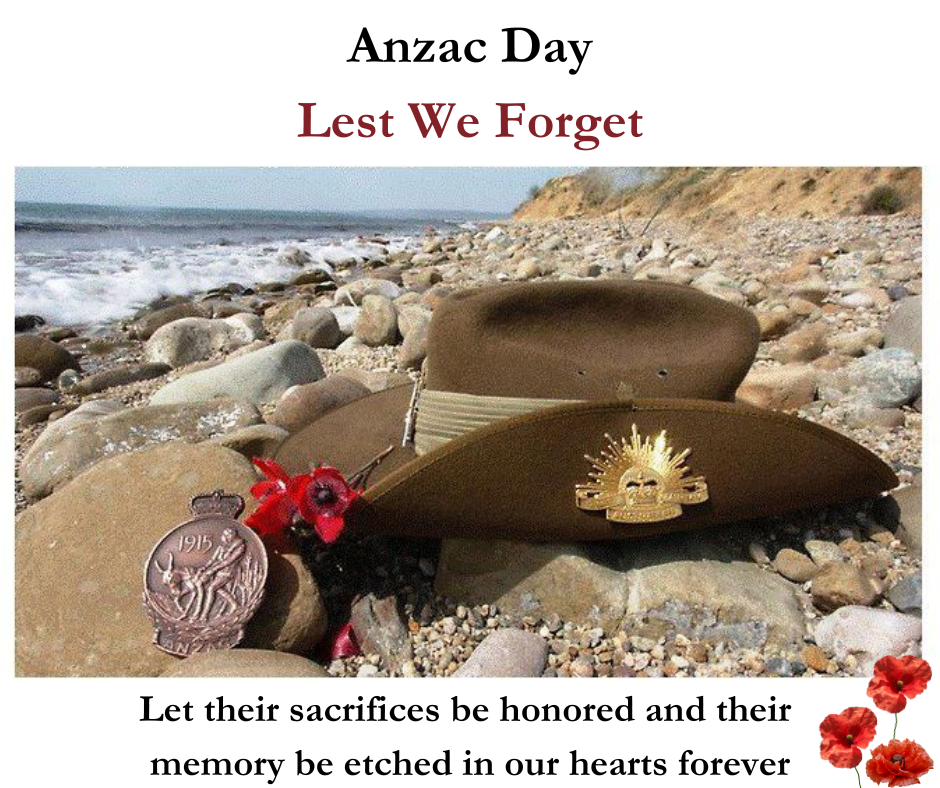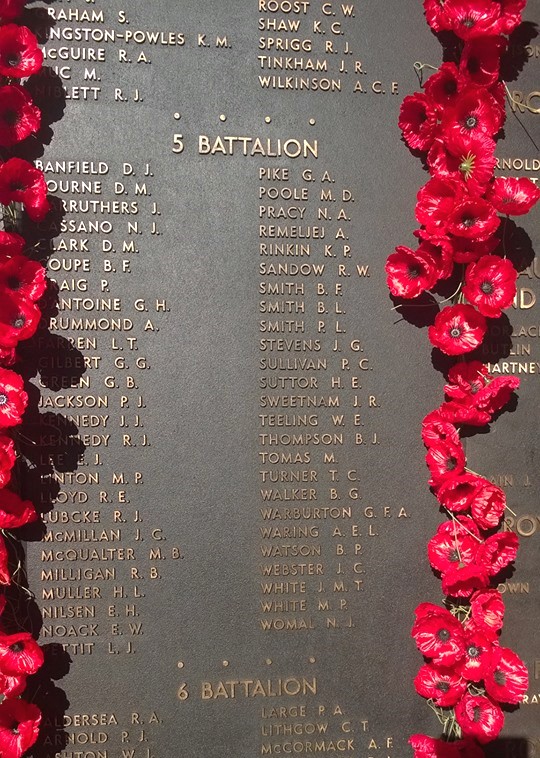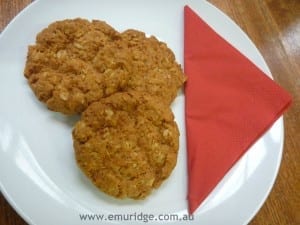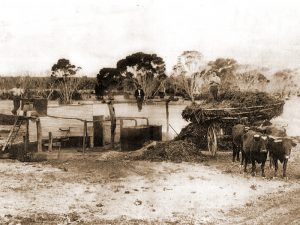No products in the cart.
Anzac Day – Timothy Turner
25 April 2023
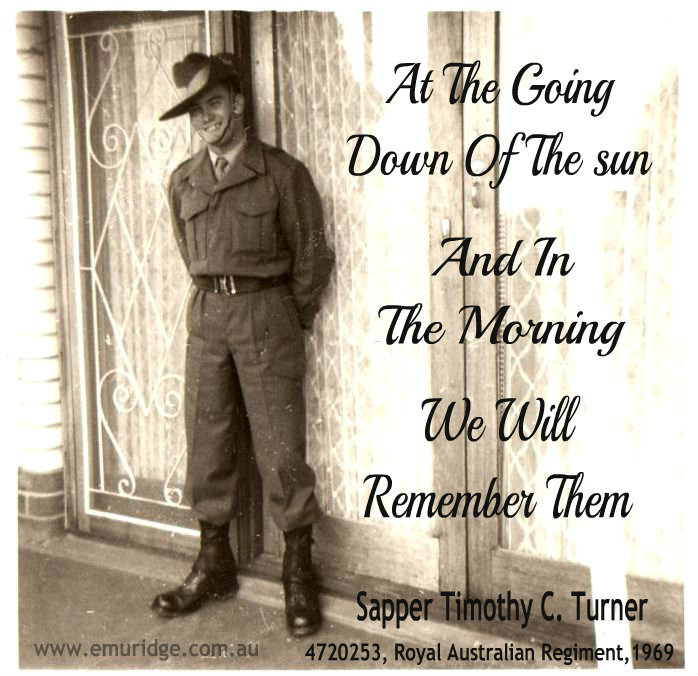
Anzac Day, the 25th of April, is one of Australia’s most important national commemorative occasions. It marks the anniversary of the first major military action fought by Australian and New Zealand forces during the First World War.
What does ‘ANZAC’ stand for?
‘ANZAC’ stands for Australian and New Zealand Army Corps.
On the 25th of April 1915, Australian and New Zealand soldiers formed part of the allied expedition that set out to capture the Gallipoli peninsula. These became know as Anzacs and the pride they took in that name continues to this day.
It was on 1 November 1914 that the first convoy of Australian and New Zealand ships left Albany in Western Australia to transport the ANZACs to the battlefields of World War I. In 2014, the days surrounding this date play host to a number of commemorative events such as a ceremonial sunset, a ship open day program and a troop march.
When most people think of the ANZACs, they think about the infamous landing at Gallipoli on 25 April 1915. The 100th anniversary of this moment will be commemorated with an ANZAC Day long weekend in Australia and many other events around the world.
Perhaps the largest event will be the traditional Dawn Service at Gallipoli. 8000 Australians, 2000 New Zealanders and 500 official representatives from other Nations will form a 10,500 strong crowd on the Gallipoli Peninsula in Turkey.
In Australia, the five years of the Centenary will be filled with air shows, art awards, marathons, exhibitions, parades and much more.
Timothy Turner
4720253 TURNER Timothy C SA 5RAR 1969
Our Uncle, Tim Turner, was an Anzac. Many of our family members (parents, siblings, nephews, great nephews has at some stage had the honour of carrying Tim’s flag at the Dawn service on Anzac day on Kangaroo Island to remember Tim and others that fought for our country. It’s a great way for the younger generation to learn and understand the meaning of Anzac Day. Tim was called up on July 18th, 1968 and was posted to 12 Platoon, D Company. He died on June 15th, 1969 in the 24th US Evacuation Hospital Long Bin, four hours after being struck in the head by fragments from an enemy mine during deployment in the village of Dat Do. He was 21 years old and had only been in Vietnam for 14 days. Two other Australians died and 22 wounded in the same incident.
When is Anzac Day?
Anzac Day falls on the 25th of April each year. The 25th of April was officially named Anzac Day in 1916.
Why is this day special to Australians?
On this day we honour all the men and women who have participated in wars, conflicts and peacekeeping operations around the world, including the ANZACs (Australian and New Zealand Army Corps) who fought at Gallipoli in Turkey during World War I. Incredibly, 100 years have passed since Australia’s involvement in the First World War.
On the morning of 25 April 1915, the Anzacs set out to capture the Gallipoli peninsula in order to open the Dardanelles to the allied navies. The objective was to capture Constantinople (now Istanbul in Turkey), the capital of the Ottoman Empire, and an ally of Germany.
The Anzacs landed on Gallipoli and met fierce resistance from the Ottoman Turkish defenders. Their plan to knock Turkey out of the war quickly became a stalemate, and the campaign dragged on for eight months.
At the end of 1915, the allied forces were evacuated. Both sides suffered heavy casualties and endured great hardships. Over 8,000 Australian soldiers were killed. News of the landing on Gallipoli and the events that followed had a profound impact on Australians at home. The 25th of April soon became the day on which Australians remember the sacrifice of those who had died in the war.
The Anzacs were courageous and although the Gallipoli campaign failed in its military objectives, the Australian and New Zealand actions during the campaign left us all a powerful legacy.
Lest we forget the animals and birds that also served till the end. More than 8 million horses, donkeys and mules and 1 million dogs died faithfully supporting their respective armies in World War 1. Faithful to the end. This link will take you to some interesting information about some of these amazing creatures including glow worms! This is also a great story of animal heroes.
What is the tradition for ANZAC Day?
Anzac Day remembrance takes two forms. Commemorative services are held at dawn – the time of the original landing in Gallipoli – across the nation. Later in the day, ex-servicemen and women meet to take part in marches through the major cities and in many smaller centres. Commemorative ceremonies are more formal and are held at war memorials around the country.
A typical Anzac Day ceremony may include the following features: an introduction, hymn, prayer, an address, laying of wreaths, a recitation, the Last Post, a period of silence, either the Rouse or the Reveille, and the national anthem. After the Memorial’s ceremony, families often place red poppies beside the names of relatives on the Memorial’s Roll of Honour, as they also do after Remembrance Day services.
Rosemary is also traditionally worn on Anzac Day, and sometimes on Remembrance Day. Rosemary has particular significance for Australians as it is found growing wild on the Gallipoli peninsula. Since ancient times, this aromatic herb has been believed to have properties to improve the memory.
The Anzac Biscuit
We have Anzac biscuits available all year round for our visitors to have with their tea or coffee at Emu Ridge. We like to tell the story of the Anzacs to others and help keep the spirit alive.
During World War One, the friends and families of soldiers and community groups sent food to the fighting men. Due to the time delays in getting food items to the front lines, they had to send food that would remain edible, without refrigeration, for long periods of time that retained high nutritional value; the Anzac biscuit met this need.
Although there are variations, the basic ingredients are: rolled oats, sugar, plain flour, coconut, butter, golden syrup or treacle, bi-carbonate of soda, and boiling water.
The biscuit was first known as the Soldiers’ Biscuit. The current name, Anzac Biscuit, has as much to do with Australia’s desire to recognize the Anzac tradition and the Anzac biscuit as part of the staple diet at Gallipoli.
The Anzac biscuit is one of the few commodities that are able to be legally marketed in Australia using the word ‘Anzac’, which is protected by Federal Legislation.
Traditional Anzac Biscuit Recipe:
Preheat oven to 160°C. Line 2 baking trays with non-stick baking paper.
Combine flour, oats, coconut and combined sugar in a large bowl.
Stir the butter, golden syrup and water in a small saucepan over medium heat until the butter melts and the mixture is smooth. Stir in the bicarbonate of soda. Add to the oat mixture and stir until well combined.
Roll level tablespoonfuls of the oat mixture into balls and place, about 5cm apart, on the prepared trays. Flatten until about 1cm thick. Bake, swapping trays halfway through cooking, for 15 minutes or until light golden. Set aside for 10 minutes to cool slightly before transferring to wire racks to cool completely.
ANZAC Centenary fast facts
- It is 101 years since Australia became involved in the First World War. The ANZAC Centenary will be commemorated from 2014 to 2018.
- The mothers, sisters and wives left behind during World War I sent ANZAC biscuits made of oats, sugar, flour, coconut, butter and golden syrup to their sons, brothers and husbands at Gallipoli. ANZAC biscuits were hard and long-lasting, designed to survive the long journey to the troops. They were eaten instead of bread (which went stale quickly). Some men crushed them, mixed them with water and ate them like porridge.
- The last surviving ANZAC, Alec Campbell, died on 16 May 2002.
- World War I was often referred to as the ‘Great War’.
- In World War I, Australians not only served at Gallipoli but also on the Western Front (France and Belgium)as well as in the Middle East.
- The Australian Imperial Force (AIF), the Royal Australian Navy (RAN), the Australian Light Horse and the Australian Flying Corps all fought in World War I.
- The word ANZAC has been protected by Australian legislation since 1921. This ensures that the word is not misused. To use the word you must seek permission from the Minister for Veterans’ Affairs.
- Although women were not allowed to fight in World War I, many tended to the injured troops overseas and in Australia as members of the Australian Army Nursing Service.
- Simpson’s donkey was most often called Duffy, but was also called Abdul or Murphy.
- Two decades after the end of World War I, Australia once again followed Britain into war for World War II.
- Source here http://www.army.gov.au/our-history/traditions/anzac-day
They shall grow not old, as we that are left grow old;
Age shall not weary them, nor the years condemn them;
At the going down of the sun and in the morning,
We will remember them.
Lest We Forget.
